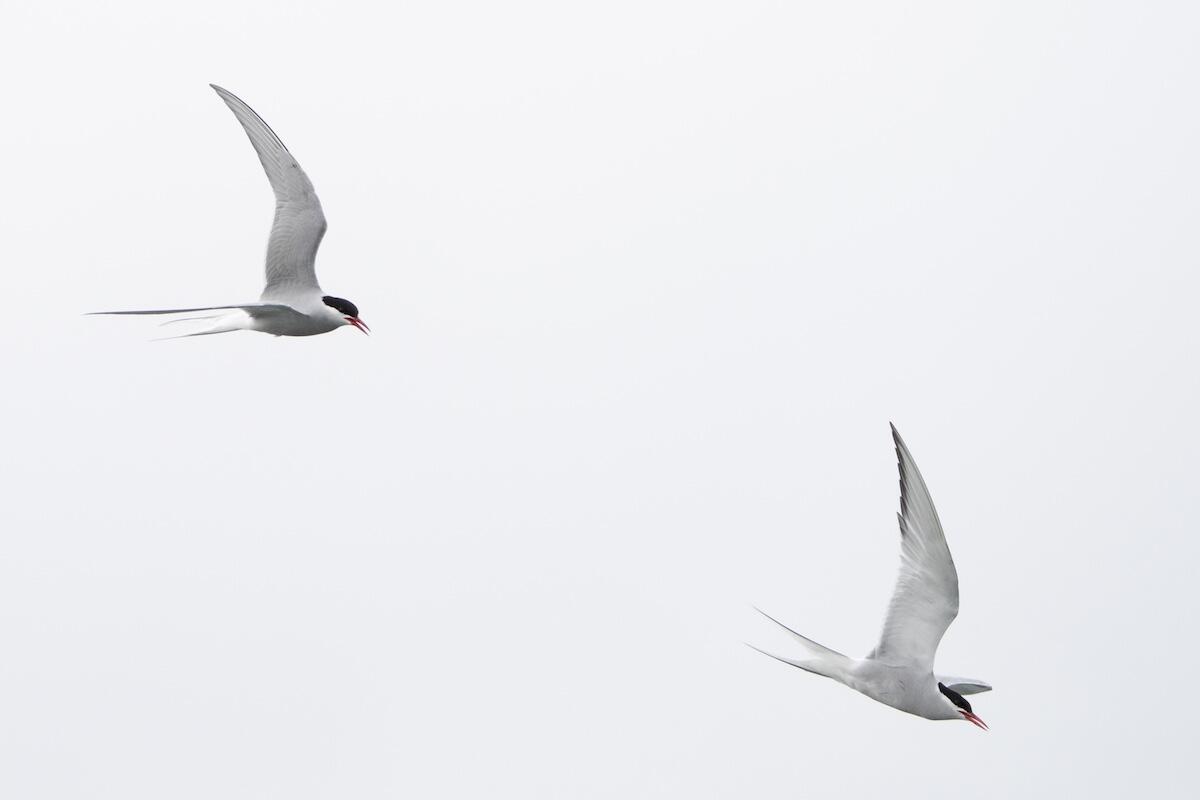Ahrnklin Estuary
A large pristine wetland, Ahrnklin Estuary hosts thousands of migratory waterfowl and Sandhill Cranes and is excellent for shorebird viewing in spring and fall. It's a spring stopover for thousands of Dunlin, Western Sandpiper, Least Sandpiper, and Long and Short-billed Dowitchers, and during a study of spring migration, 23 shorebird species were recorded.
The busiest time for shorebirds is generally early to mid-May, but large numbers may be seen during the more dispersed fall migration starting in late July and ending in October. Summer is likely to bring a variety of gulls, terns, and breeding waterfowl, and the adjacent willow flats and freshwater marshes are also used by breeding land birds.
Black Sand Spit, viewable from the estuary, is designated as an Audubon Important Bird Area (IBA). Thousands of nesting Arctic and Aleutian Terns can be seen here from May through July. Gulls, eagles, ravens, Semipalmated Plovers, and Parasitic Jaegers also use the spit. Terns are highly sensitive to disturbance, and Arctic Terns are highly aggressive toward intruders near their nests. Minimizing stops on land near the nesting colonies and keeping below the high tide line reduces disturbance. Harbor seals are commonly seen in the estuary. Watch for brown bears and coyotes in summer and fall.
Directions:
The closest watercraft access point is at Strawberry Point or Situk Landing. To reach the landing, follow directions to Strawberry Point by turning right at the Strawberry Point sign, and then proceed on the left fork and continue straight to the parking and boat launch area. Please be respectful of private land boundary signs in this area. Be sure to consult a tide book before launching to help you plan for your travel.
At Black Sand Island, paddlers have a choice of going around the island on the east side of the island between the island and the mainland or continuing on the estuary side. The inland side might be a better choice when high winds are expected along the coast. This route is not recommended during dry periods in summer. The estuary is always passable but might be more difficult during an extremely low tide. The entire estuary is approximately 8 miles long. Travel beyond the mouth of the Ahrnklin River is difficult and therefore is not recommended for inexperienced wilderness travelers.

Birding Resources:
Bird Species Checklist:
How you can help, right now
Donate to Audubon
Help secure the future for birds at risk from climate change, habitat loss and other threats. Your support will power our science, education, advocacy and on-the-ground conservation efforts.
1% for the Planet
We are proud to be part of the 1% for the Planet network. If you own a business, please consider joining 1% for the Planet to support Audubon Alaska’s conservation efforts.




